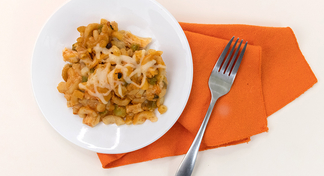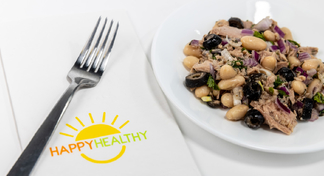Selection and Storage
- Fruits and vegetables (fresh, cooked, or cut)
- Buy in season to improve quality and save money.
Buy Fresh Fruits and Vegetables in Season! - Store in separate crisper drawers to keep fresh longer.
- Keep leftover cut pieces in plastic bags or containers to keep fresh longer.
- Choose juices that are labeled 100% fruit or vegetable juice. Store these in the door of the refrigerator.
- Buy in season to improve quality and save money.
- Meats, poultry, seafood, and eggs (raw or cooked)
- Choose lean or remove the skin and fat when possible.
- Store raw items on the bottom shelf, away from fruits, vegetables, and prepared foods.
- Place on trays or in containers to keep juices from dripping onto other foods.
- Keep eggs in the carton for longer freshness. Store on a lower shelf in case one is cracked.
- Dairy (milk, yogurt, cottage cheese, cream cheese, cheese, sour cream, butter)
- Choose low-fat.
- Choose low-sugar.
- Store milk on a lower shelf at the back where the refrigerator is coldest. Store all other dairy products at the back on a middle shelf.
- Prepared and cooked foods
- Keep prepared salads, dips, and snacks in plastic bags or containers with lids.
- Label and date prepared and cooked dishes and leftovers.
- Keep prepared and cooked foods on the upper shelf away from raw meats and eggs.
- Fresh herbs
- Store fresh herbs from the store in their original packaging.
- Wrap fresh herbs from the garden or unpackaged store-bought herbs in a paper towel and place in a plastic bag.
- Condiments
- Store salad dressing and other condiments in the door of the refrigerator.
Safety
- Temperature
- Keep refrigerator temperature below 40ºF (ideally 34–38ºF).
- Remember the danger zone is 40–140ºF. This is the temperature where bacteria grow most rapidly.
- Time
- Refrigerate all foods as soon as possible.
- Do not keep perishable foods at room temperature longer than 2 hours.
- Safely store cooked leftovers in the refrigerator for 3–4 days.
- Safely store raw ground meats for 1–2 days.
- Label and date containers of stored leftover foods.
- Make sure to use recommended refrigeration times as a guide. If a food no longer looks fresh, do not use it.
- Cleanliness
- Clean out your refrigerator once a week.
- Before throwing away a moldy item, wrap it to prevent spreading the mold. Clean the shelf or container where the moldy item was. Check nearby foods for signs of mold.
- Place an open box of baking soda on one of the shelves to keep your refrigerator smelling fresh.
- Do not use cleaners that will leave a strong chemical odor or affect food taste.
- Additional Tip
- Avoid storing too many items in your refrigerator. Without open space, cold air cannot circulate. Food will not stay cold enough.
Publication 3607 (POD-12-21)
By Samantha Willcutt and Carly Terp, Mississippi State University Extension Service.
This material was funded by USDA's Supplemental Nutrition Assistance Program - SNAP. This institution is an equal opportunity provider.












